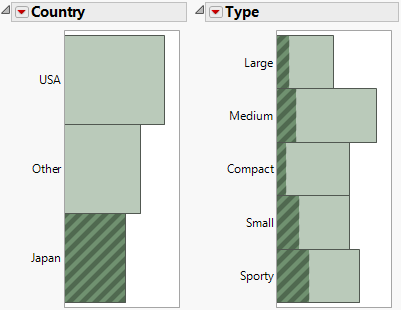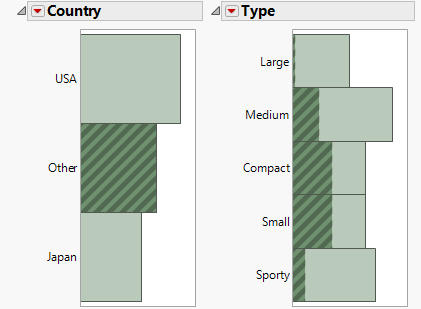Distributions of Categorical Variables
Analyzing a categorical (ordinal or nominal) variable might include questions such as the following:
• How many levels does the variable have?
• How many data points does each level have?
• Is the data uniformly distributed?
• What proportions of the total do each level represent?
Scenario
See the scenario in Distributions of Continuous Variables.
Now that the railroad company has determined that the average weight of the cars is not significantly different from the target weight, there are more questions to address.
The planning specialist wants to answer these questions for the railroad company:
• What are the types of cars?
• What are the countries of origin?
To answer these questions, look at the distribution for Type and Country.
Create the Distribution
1. Select Help > Sample Data Library and open Car Physical Data.jmp.
2. Select Analyze > Distribution.
3. Select Country and Type and click Y, Columns.
4. Click OK.
Figure 5.9 Distribution for Country and Type
Interpret the Distribution Results
The report window includes a bar chart and a Frequencies report for Country and Type. The bar chart is a graphical representation of the frequency information provided in the Frequencies report. The Frequencies report contains the following:
• Categories of data. For example, Japan is a category of Country, and Sporty is a category of Type.
• Total counts for each category.
• Proportion of the total each category represents.
For example, there are 22 compact cars, or about 19% of the 116 observations.
Interact with the Distribution Results
Selecting a bar in one chart also selects the corresponding data in the other chart. For example, select the Japan bar in the Country bar chart to see that a large number of Japanese cars are sporty.
Figure 5.10 Japanese Cars
Select the Other category to see that a majority of these cars are small or compact, and almost none are large.
Figure 5.11 Other Cars


